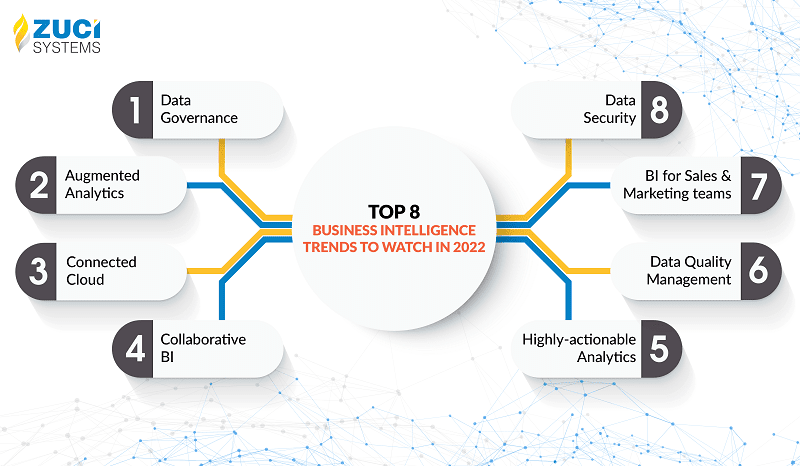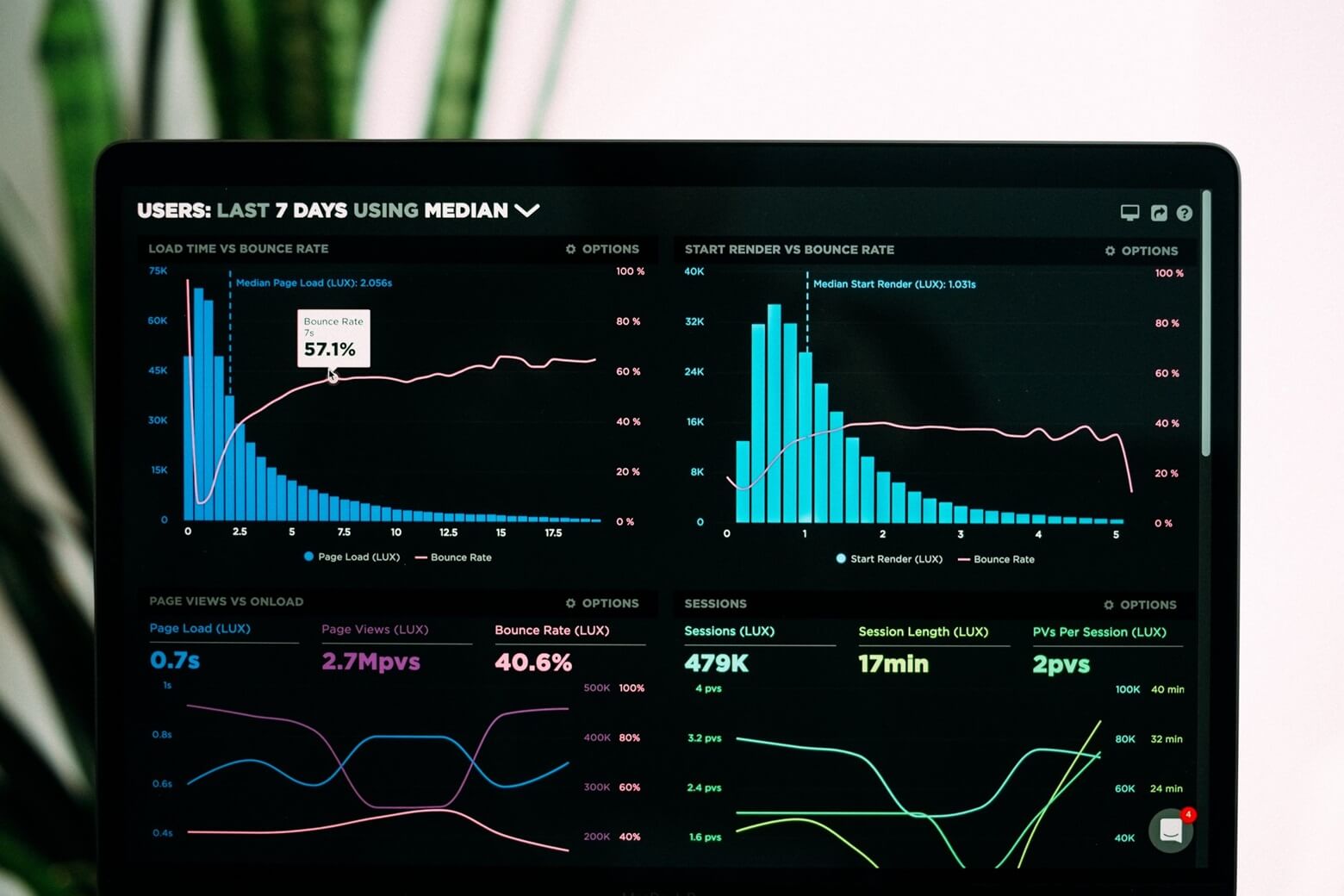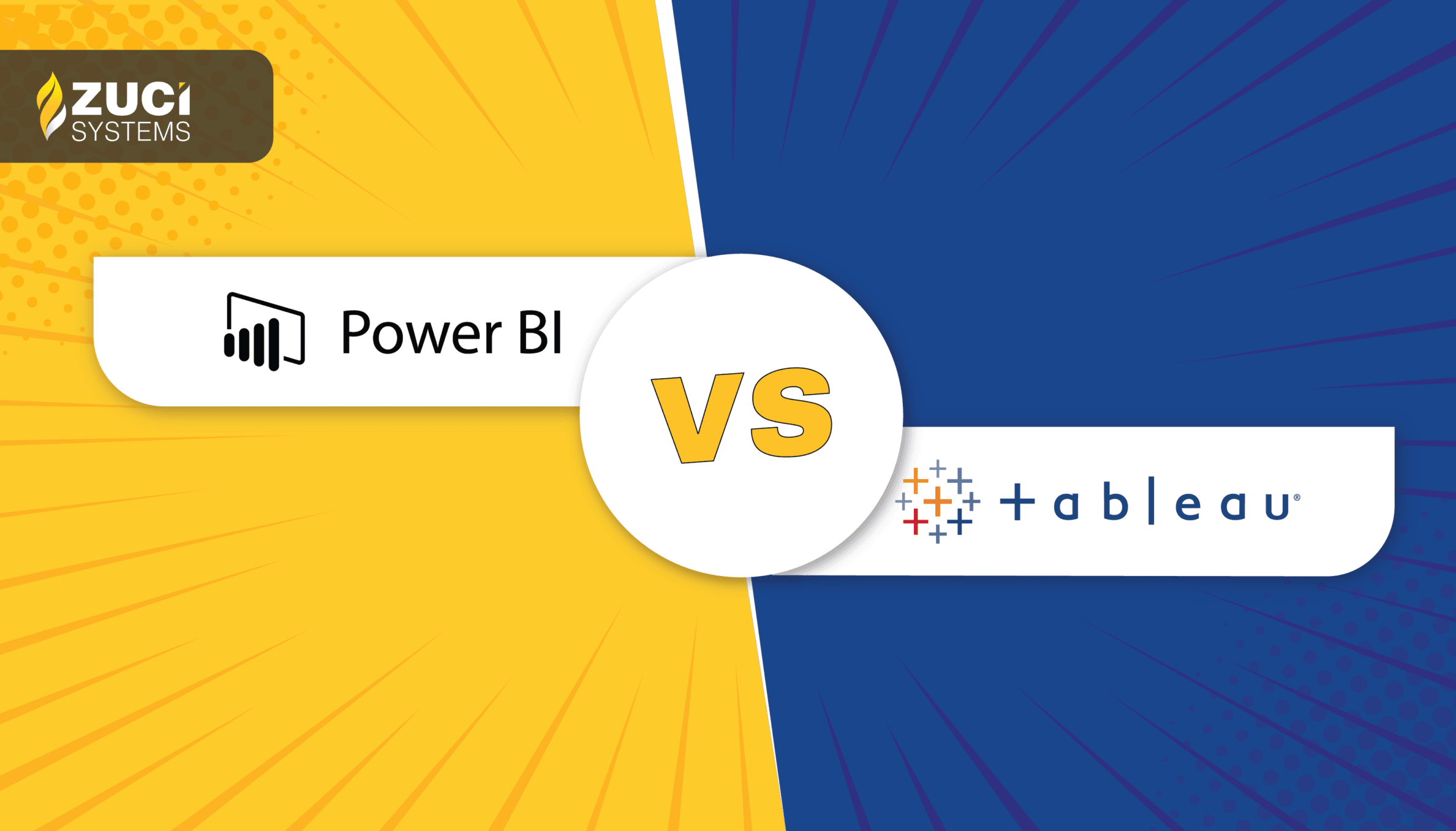Reading Time : 1 Mins
Top 8 Business Intelligence Trends in 2024
I write about fintech, data, and everything around it
Mining business intelligence data can be a daunting task. But with the right tools, methodology, and trends, it will only get easier. In this article, we have come up with a list of top 8 trends that are sure to define business intelligence in 2024.
Business Intelligence (BI) has become a must-have asset for organizations, from enterprises to SMBs. Without the right kind of data analytics, you might be shooting in the dark. You need to leverage every bit of information that you have about your business to make decisions that will impact your bottom line effectively.
The Covid-19 pandemic has made the business climate tougher, and it is even more a reason for businesses to invest in business intelligence. In such a tough business climate, companies should leverage all kinds of technology that will keep them ahead of their competitors. Business Intelligence is one such technology that can be a game-changer for businesses of all sizes. In this article, we are going to look at some of the hottest trends in BI in 2024.
Top 8 Business Intelligence Trends to watch in 2024

1. Data Governance
It is a process that provides the steps for managing data assets, operational infrastructure, and architecture. Thanks to data governance, companies can successfully use the power of processes, people, and technology to deliver trustworthy, secure, and understandable data. Thanks to the passage of the General Data Protection and Regulation (GDPR) in 2018, it is all the more important for businesses to implement data governance programs in place. Modern BI tools support data governance models to maximize the value of analytics.
2. Augmented Analytics
Powered by Artificial Intelligence (AI) and Machine Learning (ML), augmented analytics allows non-technical people to create advanced data analytics models and even derive insights from them quickly. It helps businesses handle the complexity and scale of data by facilitating data collection, data cleaning, and insight generation.
It makes data analytics accessible to more business so that they can get value from data, gives them the opportunity to ask the right questions, and generates insights in an easy-to-understand and conversational manner. The augmented analytics algorithm also provides contextual suggestions for relevant insights.
3. Connected Cloud
Every business tool that you can possibly imagine is moving to the cloud if they are not already. Even all the BI elements such as data models, data sources, data storage, analytics models, and computing power are moving to the cloud. It is a catch-22 situation for businesses as the above scenario forces them to adopt cloud analytics.
When there are a number of disparate systems that are in the cloud, it brings a lot of issues such as complexity, risk, and costs into the equation. There is no one-size-fits-all solution when it comes to BI either. This is where the connected cloud works as a credible strategy.
4. Collaborative Business Intelligence
While this isn’t a new trend as such, there has been a lot of progress in this area, thanks to the interaction between various stakeholders. Collaborative BI is essentially a combination of BI tools, and collaboration software, including web 2.0 and a variety of other technologies, all of which contribute toward data-driven decision making.
Thanks to collaborative BI, sharing analytics and reports becomes straightforward, and this helps with decision making. Professionals from different departments become involved in the decision-making process, and this encourages problem solving. Some of the most popular business intelligence software are Tableau, Power BI, QlikView, and Domo.
5. Data Security
Having accurate and updated data is pivotal towards BI success. There have been data breaches even in some of the biggest tech giants in the world. Such cyberattacks result in loss of customer data, and it leaves them exposed to unruly elements who might use their data for wrong purposes. The company’s share value drops, a bunch of users leave and it will result in negative publicity.
No matter the size of your company, you are always susceptible to cyberattacks. The only way to be better prepared is to implement security mechanisms that will be able to cover up most loopholes. In 2023, and for the coming decades, data security will never stop being relevant.
6. BI for Sales and Marketing teams
Of late, sales and marketing teams have started to realize the importance of leveraging customer data. By using BI dashboards to check the patterns and user behaviour, it becomes easy to be in a position to make informed decisions. Marketing teams can find out the objectives of prospective customers and create content that specifically targets different segments of customers. Sales teams can leverage previous data to understand the spending patterns, motivations, and needs of the customers.
BI tools empowers the sales teams to accurately predict the sales while letting the marketing teams view the effects of their latest campaign.
7. Data Quality Management
For analysts across the world, data quality is one of the most important challenges that they face regularly. It is possible to derive intelligent insights only from the data that is available. Data Quality Management is a set of practices that is used by data managers to maintain the sanctity of the data. These practices are followed through the entire process of handling data, right from acquisition, implementation, distribution, and analysis.
Data quality is assessed based on these five traits: accuracy, reliability, timeliness, relevance, and completeness. The higher the quality of the data at your disposal, the better the decisions that you can make using them.
8. Highly-actionable analytics
Business intelligence data and analytics were not available in the same place. With the help of modern BI tools, data is made available in such a manner where users can take immediate action. The BI tools allow you to combine processes and workflows with the help of extensions, APIs and embedded analytics. Thanks to the combined technologies, it becomes easy to implement actionable analytics.
Users can view the data, derive actionable insights, and implement them in a single place. By using modern BI tools, you can even see where your users are coming from. Actionable analytics helps you create insights specifically for a particular department, function or region.
Conclusion:
These are some of the most popular trends for business intelligence in the year 2024 and beyond. While we cannot say with certainty about the direction that BI and its connected ecosystem will take, we can be sure that each of the above trends will certainly feature in one way or the other.
The use cases for machine learning algorithms keep increasing with each passing day, and that is only going to add to our excitement of the possibilities in the area of business intelligence as well. For a business to remain competitive, it would be wise to leverage business intelligence tools that can create a huge dent in their bottom line.
If you are looking for a business intelligence partner that will make you leverage your data effectively, Zuci Systems can offer its data visualization services and become your reliable partner. Our highly-experienced data analysts and BI experts will make sure that your business is on the right path towards business intelligence success. Talk to us.
Related Posts













